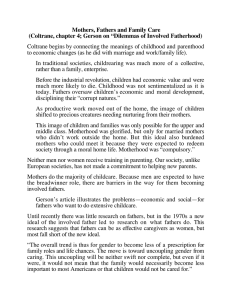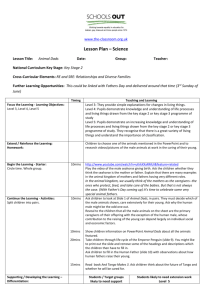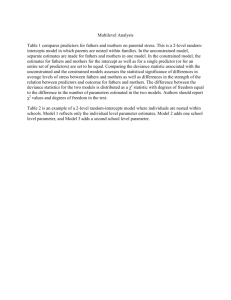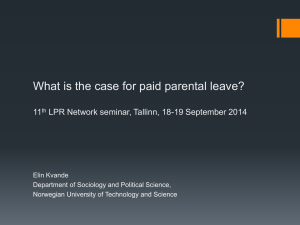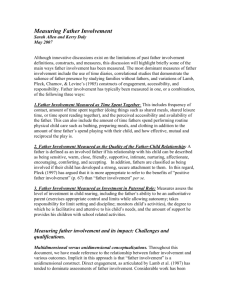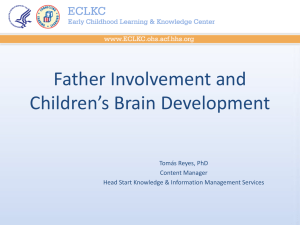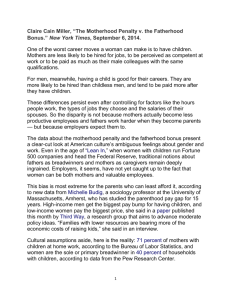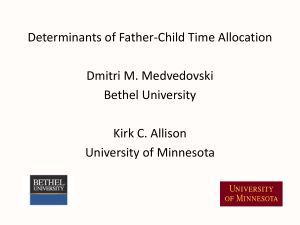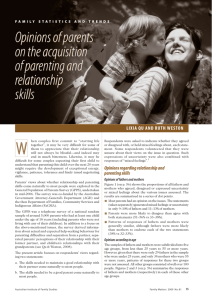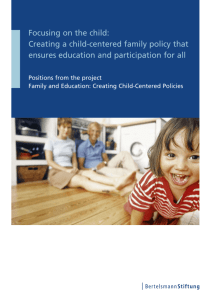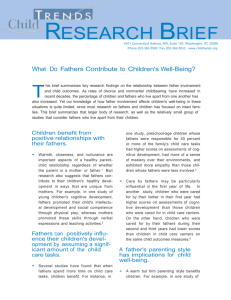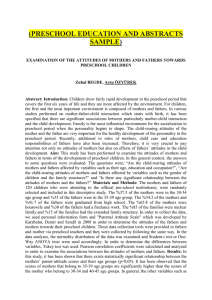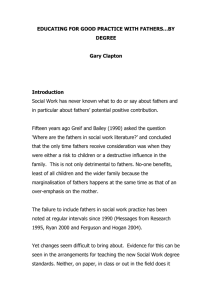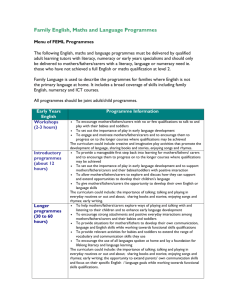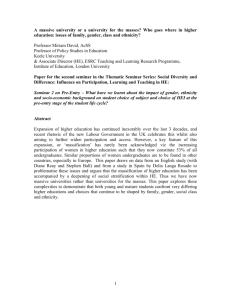Child-mother and child-father play interaction patterns with
advertisement
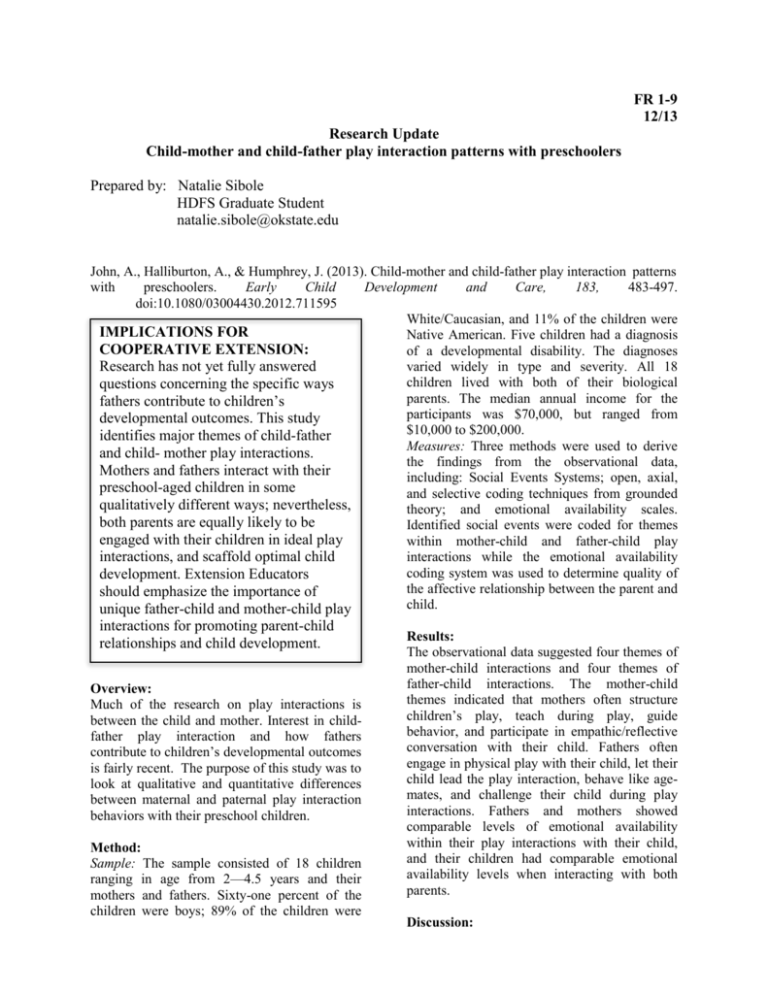
FR 1-9 12/13 Research Update Child-mother and child-father play interaction patterns with preschoolers Prepared by: Natalie Sibole HDFS Graduate Student natalie.sibole@okstate.edu John, A., Halliburton, A., & Humphrey, J. (2013). Child-mother and child-father play interaction patterns with preschoolers. Early Child Development and Care, 183, 483-497. doi:10.1080/03004430.2012.711595 White/Caucasian, and 11% of the children were IMPLICATIONS FOR Native American. Five children had a diagnosis COOPERATIVE EXTENSION: of a developmental disability. The diagnoses varied widely in type and severity. All 18 Research has not yet fully answered children lived with both of their biological questions concerning the specific ways parents. The median annual income for the fathers contribute to children’s participants was $70,000, but ranged from developmental outcomes. This study $10,000 to $200,000. identifies major themes of child-father Measures: Three methods were used to derive and child- mother play interactions. the findings from the observational data, Mothers and fathers interact with their including: Social Events Systems; open, axial, preschool-aged children in some and selective coding techniques from grounded qualitatively different ways; nevertheless, theory; and emotional availability scales. both parents are equally likely to be Identified social events were coded for themes engaged with their children in ideal play within mother-child and father-child play interactions while the emotional availability interactions, and scaffold optimal child coding system was used to determine quality of development. Extension Educators the affective relationship between the parent and should emphasize the importance of child. unique father-child and mother-child play interactions for promoting parent-child relationships and child development. Overview: Much of the research on play interactions is between the child and mother. Interest in childfather play interaction and how fathers contribute to children’s developmental outcomes is fairly recent. The purpose of this study was to look at qualitative and quantitative differences between maternal and paternal play interaction behaviors with their preschool children. Method: Sample: The sample consisted of 18 children ranging in age from 2—4.5 years and their mothers and fathers. Sixty-one percent of the children were boys; 89% of the children were Results: The observational data suggested four themes of mother-child interactions and four themes of father-child interactions. The mother-child themes indicated that mothers often structure children’s play, teach during play, guide behavior, and participate in empathic/reflective conversation with their child. Fathers often engage in physical play with their child, let their child lead the play interaction, behave like agemates, and challenge their child during play interactions. Fathers and mothers showed comparable levels of emotional availability within their play interactions with their child, and their children had comparable emotional availability levels when interacting with both parents. Discussion: This study found that while children’s play interactions with mothers and fathers were similar in their affective qualities (i.e., emotional availability of parents and children), themes of those play interactions differed depending on the dyad (i.e., child-mother or child-father). In child-father interactions, the theme of physical play, which previous research has linked to attachment security, suggests that fathers use physical closeness and active play in their involvement with their preschool-aged child. Scaffolding, which previous research has shown to foster children’s development, was a theme that was found in both child-father and childmother interactions, but was characterized by different strategies. Whereas mothers used teaching strategies to scaffold learning, fathers were found to scaffold children’s skills by motivating and challenging children. Importantly, themes identified in this study were consistent across play interactions regardless of whether or not the child had a disability.
